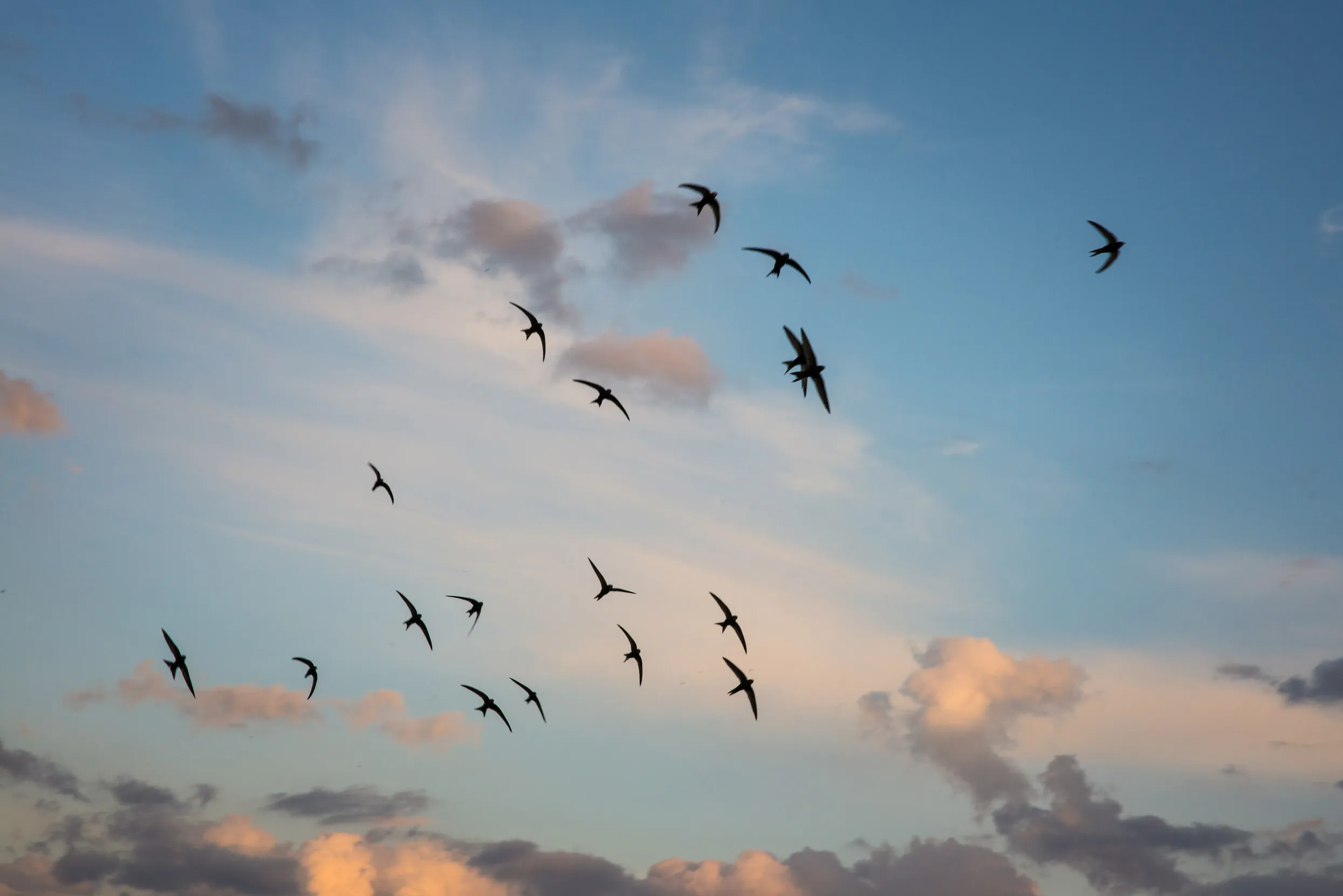
Defend their nests
Swifts have lived alongside humans for hundreds of years. It’s time to stand up for future generations of our small but mighty neighbours before we lose them forever.

The arrival of Swifts marks the start of our summer, their calls raining down as they soar above at serious speed. Small yet mighty, these masters of the skies make one of nature’s most incredible journeys, each year flying from the savannahs and forests of Africa to the towns and cities of the UK, and back again – a round trip of at least 14,000 miles.

But now after coming all that way – eating, mating and even sleeping on the wing – too many of these birds find nowhere to nest. When older buildings are renovated or knocked down, nesting sites in their eaves or under roof tiles, which may have been used by generations of birds, disappear. New buildings seldom provide alternative nest sites for them.
Swift populations are plummeting, they’re on the UK’s Red List of Birds of Conservation Concern. Although we don’t have the full picture about why, we think lack of nest sites may be partly the cause. The sad fact is that for every ten Swifts zooming across our roof tops in 1995, there were only about three by 2022.

But there’s hope. We’ve been working with other Swift experts to try and help Swifts find new homes, such as ‘Swift bricks’. Snug and watertight, these special bricks have a space inside for Swifts to build nests and safely raise their chicks. Thousands of them have already been installed across the UK, providing crucial new nesting sites for Swifts, and other birds like House Sparrows which are also in serious decline. Your gift today could help protect safe havens for Swifts and other vulnerable birds.

Defend their nests
Our Swifts are depending on us, and knowing which of their homes are most at risk is vital. That’s why we urgently need more support for projects like Swift Mapper, an online tool for people to log sightings of nesting Swifts. By building a picture of where these precious birds are nesting this summer, we can focus our habitat efforts next year, and every year to come.
Swifts travel thousands of miles every year without stopping – so we won’t stop either. We won’t rest until every one of these epic travellers has a safe haven to return to. Are you with us?
Donate now
Dr Guy Anderson, one of our migratory species specialists here at the RSPB, said: “I’m deeply concerned about how many Swifts have been lost. The thought of a future where the curved wings and joyous calls of Swifts no longer fill our skies on summer evenings doesn’t bear thinking about. Protecting species like these is at the heart of what we do, and as success stories like Red Kites and Bitterns have shown us, even the most endangered birds can – and will – be brought back from the brink. So now’s the time for you to take action.”
Donate now

Our natural world is full of connections, with all of our wonderful wildlife dependent on other species to survive and thrive. This means when we work to protect key species like Puffins and Swifts and restore landscapes to work for species like Kingfishers and Golden Eagles, we also help a whole host of other wildlife. From the plants to the sandeels to the butterflies to the bees, when you help protect our birds, you’re also helping an abundance of other creatures great and small. Thank you.

Defend their nests
Your donation will be used wherever it is needed most to support Swifts and other priority species in greatest need of our conservation efforts.